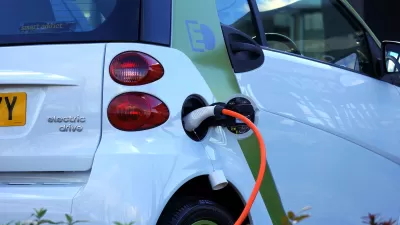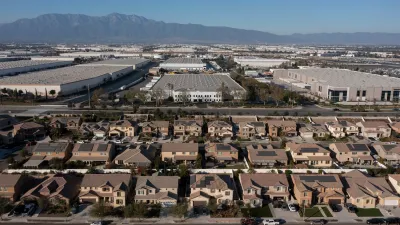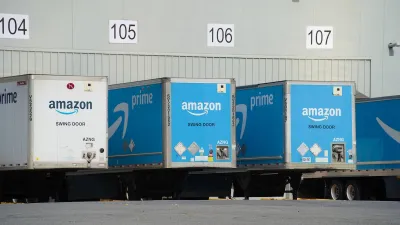The most dangerous air pollution is not smog and is barely known by the public, writes Bill Adams, editor of UrbDeZine. Line-source particulate matter air pollution could change the way the public thinks about road projects and gas powered cars.
Roughly one-third of the U.S. population unknowingly lives, works, or goes to school within a toxic auto-emission zone that has nothing to do with smog. These zones are defined by key distances and other factors that shape an ultra-fine particulate matter plume near busy roadways, writes Bill Adams, editor of UrbDeZine. Within these zones are elevated rates of death and a wide array of conditions that range from heart disease to autism.
Moreover, these auto-emission zones have significant social justice implications, adds Adams, because of the disproportionate number of poor and ethnic minorities that reside within them. He writes:
"Suburban expansion creates a demand for road expansion through existing neighborhoods. Lower income neighborhoods and ethnic minority populations least often wield the political influence necessary to resist road expansion projects. Additionally, multifamily and affordable housing is more likely to be sited near high traffic areas than is more expensive detached housing. More recently, the construction of high density “transit oriented developments” (TODs), which are intended to reduce auto reliance and which often include affordable housing, are frequently sited near high traffic areas."
Adams goes on to posit:
"Perhaps, if the public was more aware of the direct and unequal health impacts of high-traffic roadways, transitioning from roadway expansion to transportation alternatives would receive more urgency."
FULL STORY: What is a safe distance to live or work near high auto emission roads?

Planetizen Federal Action Tracker
A weekly monitor of how Trump’s orders and actions are impacting planners and planning in America.

Congressman Proposes Bill to Rename DC Metro “Trump Train”
The Make Autorail Great Again Act would withhold federal funding to the system until the Washington Metropolitan Area Transit Authority (WMATA), rebrands as the Washington Metropolitan Authority for Greater Access (WMAGA).

DARTSpace Platform Streamlines Dallas TOD Application Process
The Dallas transit agency hopes a shorter permitting timeline will boost transit-oriented development around rail stations.

LA County Creating Action Plan to Tackle Extreme Heat
Los Angeles County is creating a Heat Action Plan to help communities stay safe during extreme heat, with steps like adding more shade, improving buildings, and supporting the neighborhoods most at risk.

Maryland Plans Quick-Build Complete Streets Projects
The state will use low-cost interventions to improve road safety in five Maryland counties.

Downtown Los Angeles Gears Up for Growth
A new report highlights Downtown L.A.’s ongoing revival through major housing projects, adaptive reuse, hospitality growth, and preparations for global events in the years ahead.
Urban Design for Planners 1: Software Tools
This six-course series explores essential urban design concepts using open source software and equips planners with the tools they need to participate fully in the urban design process.
Planning for Universal Design
Learn the tools for implementing Universal Design in planning regulations.
City of Charlotte
Municipality of Princeton
Roanoke Valley-Alleghany Regional Commission
City of Camden Redevelopment Agency
City of Astoria
Transportation Research & Education Center (TREC) at Portland State University
US High Speed Rail Association
City of Camden Redevelopment Agency
Municipality of Princeton (NJ)





























